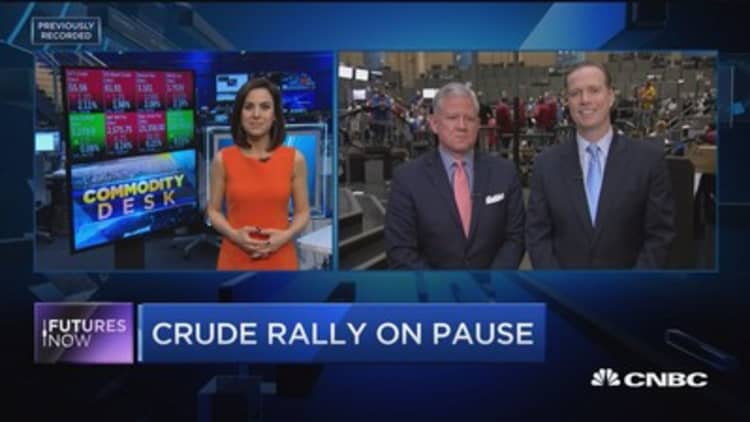Oil prices fell on Wednesday after the U.S. government reported an unexpected increase in crude and gasoline stocks, but an increase in refining runs and a dropoff in distillate stocks helped prices bounce off session lows.
Prices remained under pressure from this week's International Energy Agency (IEA) outlook for slower growth in global crude demand.
While the crude build of 1.9 million barrels reported by the Energy Information Administration was more than forecast, it was not as big as the increase of 6.5 million barrels reported Tuesday by industry group the American Petroleum Institute. The EIA data encouraged buying at session lows.
"Overall, the report is somewhat supportive because it was not as bearish as the previous API report last night. That is why we are slowly digging our way out of the downside seen earlier this morning," said Phil Flynn, senior energy analyst at Price Futures Group in Chicago.

The data also showed distillate stocks in the U.S. Gulf fell to a one-year low, while refining rates rose in the latest week, led by a jump in East Coast refining, which is operating at a record 99.8 percent of capacity. Increased refining rates could eventually reduce crude inventories.
U.S. West Texas Intermediate (WTI) crude finished Wednesday's session down 37 cents at $55.33 per barrel, following a nearly 2 percent decline in the previous session.
Brent crude futures were down 38 cents at $61.83 per barrel by 2:26 p.m. ET (1826 GMT), having fallen by 1.5 percent on Tuesday, its largest one-day drop in a month.
Brent's price is down nearly 5 percent since last week when it hit its highest since mid-2015.
On Tuesday, the IEA cut its oil demand growth forecast by 100,000 barrels per day (bpd) for both 2017 and 2018. That could mean world oil consumption may not breach 100 million bpd next year as many had expected. Also, supplies are likely to exceed that level, particularly as U.S. production continues to rise.
The IEA report countered a regular market update from the Organization of the Petroleum Exporting Countries, which just a day earlier said 2018 would see a strong rise in oil demand.

U.S. oil production has jumped more than 14 percent since mid-2016 to 9.65 million bpd and is expected to grow further.
The IEA said non-OPEC production would rise 1.4 million bpd in 2018, undermining efforts by the Organization of the Petroleum Exporting Countries and other producers to limit global crude supplies and support prices.
OPEC meets on Nov. 30 and is expected to agree an extension to its output cuts.
"The urgency for countries participating in the agreement to formulate an exit strategy is increasing as oil output in the U.S. continues to climb," said Abhishek Kumar, senior energy analyst at Interfax Energys Global Gas Analytics in London.
— CNBC's Tom DiChristopher contributed to this report.

